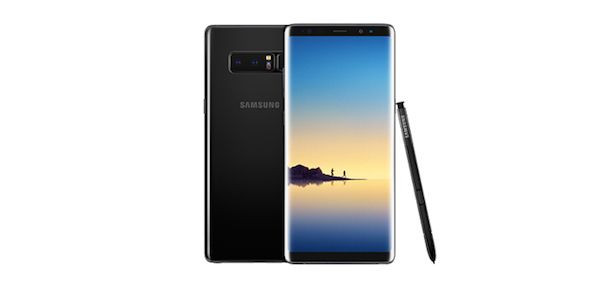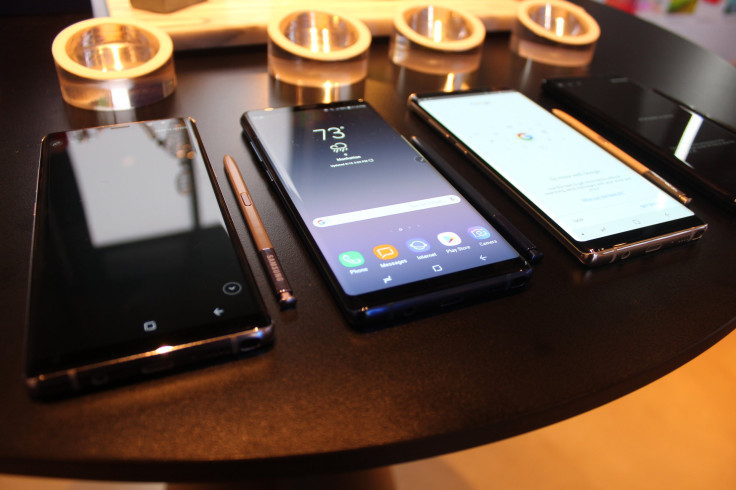Samsung Galaxy Note 8 Vs. Note 7: Comparison Review Of Specs, Features
Samsung already took the wraps off of the Galaxy Note 8 earlier today during its Unpacked 2017 event, and the phone looks just like what rumors claimed it to be. The handset is indeed a completely different-looking device compared to its predecessor. But does it only differ from the Note 7 in terms of form factor? Find out through this comparison review.
Design
As already mentioned before, the Galaxy Note 8 looks nothing like the Note 7. The redesign Samsung did to its new phablet is akin to what it did to the Galaxy S8. The handset features a 6.3-inch Quad HD+ dual-edge display with 2960 x 1440 resolution and 521 ppi pixel density, while the Note 7 came with a 5.7-inch Super AMOLED display with 2560 x 1440 screen resolution and 515 ppi. The most obvious difference between the Note 8 and the Note 7 is the lack of a physical home button on the former and the presence of edge-to-edge, seemingly bezel-less display. The Note 7 had thick bezels on top and at the bottom, while the Note 8 now sports an almost all-screen front.
At the back, a different story is being told by the dual-lens module of the Note 8. This is the first time that Samsung outfitted dual cameras on a flagship phone, and it is just so fitting for the company to do it on an overhauled successor such as the Note 8. The camera module on the Note 8 is composed of a 12-megapixel wide angle lens and a 12-megapixel telephoto lens. Also present at the back is the fingerprint reader, which Samsung initially intended to embed into the AMOLED display of the device but the development of such a technology fell through. This isn’t the first time that the company placed the fingerprint sensor at the back either, since it first adopted such placement on the Galaxy S8.

It is worth noting that despite the seemingly bezel-less design of the Note 8, it still comes with mostly the same features on the top bezel of the Note 7. It has a front-facing camera with an 8-megapixel sensor (the one on the Note 7 has 5 megapixels) and an iris sensor. Elsewhere, the Galaxy Note 8 still has a place for the S-Pen stylus, and it is still found on the same location as the one on the Note 7. The successor also comes with USB Type-C just like its discontinued predecessor. And let’s not forget the presence of the 3.5mm jack, which Samsung rival Apple ditched from its smartphones starting with last year’s iPhone 7.
Specs
The Galaxy Note 7 debuted with Qualcomm’s Snapdragon 820 processor in the U.S. The quad-core chipset was composed of two 2.15 GHz Kryo and two 1.6 GHz Kryo cores. The handset also featured the Adreno 530 GU. This year, Samsung used Qualcomm’s Snapdragon 835 SoC for the Note 8. It consists of four 2.35 GHz Kryo and four 1.9 GHz Kryo cores. The South Korean giant also opted to use the Adreno 540 GPU for its latest phablet offering.
In terms of memory, Samsung ensured the Note 8 would offer more options to consumers. The Note 7 debuted with 4GB of RAM and 64GB of internal memory with the option of expanding memory by 256GB via the microSD card slot. The Note 8, on the other hand, comes with 6GB of RAM and three internal storage options: 64GB, 128GB and 256GB. Plus, there’s still the option of expanding memory by 256GB using a microSD card.

The Note 8 has a smaller battery than the Note 7. It houses a 3,300mAh non-removable Li-Ion battery. On the contrary, the Note 7 had a 3,500mAh non-removable Li-Ion battery. The smaller capacity is due to the redesign of the handset. The Note 8 features a 6.3-inch display despite being the same size as the Note 7. The presence of the S-Pen stylus has also hindered the company from upsizing the battery capacity on the Note 8. Furthermore, Samsung curbed the power source on its handsets ever since the Note 7’s battery was found to be prone to catching fire or exploding.
Features
Samsung’s newest Note-branded handset is packed with a lot of sensors. It has an accelerometer, barometer, gyro sensor, geomagnetic sensor, hall sensor, heart rate sensor, proximity sensor, RGB light sensor, pressure sensor and, of course, a fingerprint sensor. The Note 7 also had almost the same sensors. The only main difference here is the fact that the fingerprint sensor on the Note 7 was a front-mounted one.
Both the Galaxy Note 8 and the Note 7 are IP68 certified dust- and water-resistant. This means both could withstand being submerged in over 1.5 meters deep water for around 30 minutes. The two handsets also have Corning Gorilla Glass 5 as protection on both the front and back panels. The displays on the two devices are both HDR10 compliant and have an Always-on feature. Interestingly, only the display on the Note 8 have 3D Touch technology. But this is understandable knowing that the newer device does not have physical keys. Besides, 3D Touch is limited to the screen-embedded home button only.
The batteries on the Note 8 and Note 7 also feature Fast Charging. They are capable of replenishing power supply at a fast rate both on wired and wireless setups. It is important to note at this point that the Note 8 will come with Android 7.1.1 Nougat straight out of the box. Plus, the handset has support for Samsung Desktop Experience (DeX), which is basically the Android equivalent of Microsoft’s Display Dock on Windows 10 Mobile. DeX gives the phone the power to run a desktop computer. The technology was first introduced with the Galaxy S8 and Galaxy S8+.
Miscellaneous
Samsung’s now defunct Galaxy Note 7 was available in three color options: Blue Coral, Silver Titanium and Black Onyx. This year, the company decided to make four color variants for the Note 8, namely: Midnight Black, Maple Gold, Orchid Grey and Deep Sea Blue.
The Samsung Galaxy Note 8 will start shipping on Sept. 15. Preorders for the device will open on Aug. 24. A Samsung representative has said that the unlocked version of the device will cost $929.99.

© Copyright IBTimes 2024. All rights reserved.




















